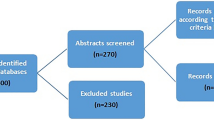Abstract
Trinucleotide repeat containing 9 (TNRC9) is a gene located at chromosome 16q12. Although of an uncertain function, it is a newly described risk factor for breast cancer. It contains a putative high-mobility group box motif, suggesting its possible role as transcription factor; it has been implicated in breast cancer metastasis. Published studies on the association between TNRC9 polymorphisms and breast cancer risk remain inconclusive, and a meta-analysis is required to verify the association. This pioneering research performed a meta-analysis of eight studies comprising a total of 25,828 cases and 36,177 controls. Significantly elevated breast cancer risk was associated with TNRC9 rs3803662 polymorphism when all studies were pooled in the meta-analysis (T vs. C allele contrast model: OR 1.18, 95% CI 1.09–1.28; TT vs. CC homozygote codominant model: OR 1.26, 95% CI 1.02–1.55; TT vs. CC+CT recessive model: OR 1.23, 95% CI 1.06–1.42). For TNRC9 rs12443621 polymorphism, no significant association was detected in all genetic models. For TNRC9 rs12443621 polymorphism, meanwhile, no significant association was observed in all comparison models. Conclusively, this meta-analysis suggests that TNRC9 rs3803662 polymorphism was significantly correlated with breast cancer risk and the variant T allele of TNRC9 rs3803662 polymorphism is a low-penetrant risk factor for developing breast cancer. There is no significant association between TNRC9 rs12443621 and rs8051542 polymorphisms and risk of breast cancer in current literature.




Similar content being viewed by others
References
Parkin DM, Bray F, Ferlay J, Pisani P (2005) Global cancer statistics, 2002. CA Cancer J Clin 55:74–108
Lichtenstein P, Holm NV, Verkasalo PK, Iliadou A, Kaprio J, Koskenvuo M, Pukkala E, Skytthe A, Hemminki K (2000) Environmental and heritable factors in the causation of cancer—analyses of cohorts of twins from Sweden, Denmark, and Finland. N Engl J Med 343:78–85
Dong LM, Potter JD, White E, Ulrich CM, Cardon LR, Peters U (2008) Genetic susceptibility to cancer: the role of polymorphisms in candidate genes. JAMA 299:2423–2436
Welcsh PL, King MC (2001) BRCA1 and BRCA2 and the genetics of breast and ovarian cancer. Hum Mol Genet 10:705–713
Easton DF, Pooley KA, Dunning AM, Pharoah PD, Thompson D, Ballinger DG, Struewing JP, Morrison J, Field H, Luben R et al (2007) Genome-wide association study identifies novel breast cancer susceptibility loci. Nature 447:1087–1093
Stacey SN, Manolescu A, Sulem P, Rafnar T, Gudmundsson J, Gudjonsson SA, Masson G, Jakobsdottir M, Thorlacius S, Helgason A et al (2007) Common variants on chromosomes 2q35 and 16q12 confer susceptibility to estrogen receptor-positive breast cancer. Nat Genet 39:865–869
Smid M, Wang Y, Klijn JG, Sieuwerts AM, Zhang Y, Atkins D, Martens JW, Foekens JA (2006) Genes associated with breast cancer metastatic to bone. J Clin Oncol 24:2261–2267
Huijts PE, Vreeswijk MP, Kroeze-Jansema KH, Jacobi CE, Seynaeve C, Krol-Warmerdam EM, Wijers-Koster PM, Blom JC, Pooley KA, Klijn JG et al (2007) Clinical correlates of low-risk variants in FGFR2, TNRC9, MAP3K1, LSP1 and 8q24 in a Dutch cohort of incident breast cancer cases. Breast Cancer Res 9:R78
Antoniou AC, Spurdle AB, Sinilnikova OM, Healey S, Pooley KA, Schmutzler RK, Versmold B, Engel C, Meindl A, Arnold N et al (2008) Common breast cancer-predisposition alleles are associated with breast cancer risk in BRCA1 and BRCA2 mutation carriers. Am J Hum Genet 82:937–948
Liang J, Chen P, Hu Z, Shen H, Wang F, Chen L, Li M, Tang J, Wang H, Shen H (2010) Genetic variants in trinucleotide repeat-containing 9 (TNRC9) are associated with risk of estrogen receptor positive breast cancer in a Chinese population. Breast Cancer Res Treat
Li L, Zhou X, Huang Z, Liu Z, Song M, Guo Z (2009) TNRC9/LOC643714 polymorphisms are not associated with breast cancer risk in Chinese women. Eur J Cancer Prev 18:285–290
Latif A, Hadfield KD, Roberts SA, Shenton A, Lalloo F, Black GC, Howell A, Evans DG, Newman WG (2010) Breast cancer susceptibility variants alter risks in familial disease. J Med Genet 47:126–131
Gorodnova TV, ESh K, Yanus GA, Katanugina AS, Abysheva SN, Togo AV, Imyanitov EN (2010) Distribution of FGFR2, TNRC9, MAP3K1, LSP1, and 8q24 alleles in genetically enriched breast cancer patients versus elderly tumor-free women. Cancer Genet Cytogenet 199:69–72
Hemminki K, Muller-Myhsok B, Lichtner P, Engel C, Chen B, Burwinkel B, Forsti A, Sutter C, Wappenschmidt B, Hellebrand H et al (2010) Low-risk variants FGFR2, TNRC9 and LSP1 in German familial breast cancer patients. Int J Cancer 126:2858–2862
Tapper W, Hammond V, Gerty S, Ennis S, Simmonds P, Collins A, Eccles D (2008) The influence of genetic variation in 30 selected genes on the clinical characteristics of early onset breast cancer. Breast Cancer Res 10:R108
Garcia-Closas M, Hall P, Nevanlinna H, Pooley K, Morrison J, Richesson DA, Bojesen SE, Nordestgaard BG, Axelsson CK, Arias JI et al (2008) Heterogeneity of breast cancer associations with five susceptibility loci by clinical and pathological characteristics. PLoS Genet 4:e1000054
Acknowledgments
The authors are fully responsible for all content and editorial decisions, and they have not received any financial support or other form of remuneration related to the development of this article.
Author information
Authors and Affiliations
Corresponding author
Additional information
M.-B. Chen, X.-Y. Wu and P.-H. Lu contributed equally to this work and should be considered as co-first authors.
Rights and permissions
About this article
Cite this article
Chen, MB., Wu, XY., Shen, W. et al. Association between polymorphisms of trinucleotide repeat containing 9 gene and breast cancer risk: evidence from 62,005 subjects. Breast Cancer Res Treat 126, 177–183 (2011). https://doi.org/10.1007/s10549-010-1114-6
Received:
Accepted:
Published:
Issue Date:
DOI: https://doi.org/10.1007/s10549-010-1114-6




